I am finding it really hard to write this blog post, it is about museums and I love museums so surely it shouldn’t be this hard. It is about drawing attention to a museum doing great things for autistic children and their families, something I am very passionate about so that shouldn’t make it this hard either. I guess it is really important to me which is why I must have started this post in about five different ways and scrapped them all. I have discovered inspiration to write is one thing, it flows it comes out of nowhere, it bubbles up and has a life of its own. Writing about a bit of Roman pot or discovering Roman London, no problem, but writing to make a point, to try and say something important is a whole different difficult drawn-out experience.
I wrote a post a few months back about our family trip to the Science Museum for their Early Bird Autism friendly session (http://tinctureofmuseum.wordpress.com/2013/10/02/the-science-museum-early-bird-autism-session/). I never intended to write about our visit, I was just hoping to have a good day out with all the kids at one of London’s most popular and busy museums. It sounds like a normal everyday thing to do, take the family to a museum, but for us it is not so easy. My eldest daughter is autistic and we face many hurdles and barriers to visiting a big, busy museum. Crowds, noise, lights, smells, I never know what will cause a problem. My daughter doesn’t know either, until the moment comes and we are in a tornado of anxiety, tears, fear and pain. Sometimes that tornado arrives on our own doorstep and a trip down the road can be an all encompassing ritual of pictures, plans, reassurance, frustration and emotions. On days like these a trip to the Science Museum seems like a trip to the moon, a million miles away, unrealistic and unachievable.
The post I wrote was a thank you to the Science Museum for putting on the special session and for allowing us access to an amazing museum. Unfortunately to go once and have a good time is never enough, you want to go again and again, you think why don’t other museums do this. I know it is hard, it is difficult, I volunteer in museums, I know there are considerations of costs, funding, planning, staff, skills, expertise, where do you start?
So I thought I would like to go back to another of their Early Bird Autism sessions, I would like to go back and learn more. Why they decided to put the event on, how they went about it, what problems they faced. If they can do it why aren’t other museums doing it too. Museums want to be accessible to all, they try, they do a lot, they do amazing things but they don’t reach everyone because sometimes I hate to say it but they don’t try hard enough. I know from experience, if there is something you want to do that seems so hard and unattainable, if you break it down to small steps, it can be done. It takes time, patience and persistence but you get there, ask any parent to an autistic child. When you do get there, when it works, the sense of achievement is something very special and the memory of it lasts a lifetime.
I have been privileged to spend time with a member of the learning team at the Science Museum and ask them all my questions about their Early Bird sessions. It was a chance for me to let them know how important these events are, but also discover the other side of the coin, all the work that has gone on to get to this point. I have pulled the answers to those questions into a separate blog. It is a ‘tips and how to guide’ for other museums who want to put on autism events, it will be up on the blog soon.
I also returned to see one of their sessions, but this time without my children. I went solo, it felt very strange to be honest, a lone adult amongst families, missing my children and knowing how much they would have enjoyed themselves. But I wanted to really see what was going on, try and be detached, not worrying about my own family would free me up to see if our first visit was a rare beautiful gift or if these sessions do really work, not just for us but lots of other families too.
First thing you notice is something very simple and something that can be easy overlooked. If you open up early before most of the other museums on Exhibition Road are open, it is quiet, strangely empty, straight away you are stripping out the noise and the people. There are some before and after pictures below that really highlight this. Museums sometimes forget that the barriers to visiting are outside the museum: tubes, buses, cars, long busy journeys. I know these can’t all be removed but the way can be smoothed. A lot of work goes into planning an event like this but sometimes a little information on your website can go a long way. When are the quiet times? Which entrance to the museum is best? Sometimes you have to reach out beyond the museum walls, to think about accessibility on broader terms.
But the Science Museum don’t just open early to give you a helping hand, they only allow in the pre-booked families for the Early Bird sessions. They restrict the numbers, the event is intimate and low key, not something the Science Museum are particularly known for. There is lots of help available for adults and for children, thought has gone into making the museum space accessible. I am not talking about opening up every gallery or turning off all the audio or bright lights. It is thinking about what alternatives can be offered, where are the dark spaces in the museum, which areas have bright lights, tell the parents and let them make decisions on what will work with their child. Children are all different and autism affects them all completely differently, a one size fits all ethos will never ever work.
The Science Museum run a number of events during the Early Bird Session, when we visited as a family we arrived late and only spent time in the Launch Pad Gallery. This time I was able to wander around the museum to see what was on offer.
I love the ground floor where you enter the Science Museum, normally full of people tramping up and down in wonder, today over taken as a car racing ramp. The children are encouraged to make their own car and race up and down. But as with all the activities on offer you can pick and choose what suits your child.
There was an area to dress up as an astronaut or an alien and have your picture taken. I got such joy from watching the children dress up. One little boy didn’t want to put on a costume but clutched an inflatable purple alien instead. When his photo was taken he dropped the toy and began jumping up and down in pure joy, it was a lovely moment. I overheard a mother say her daughter had not wanted to have her picture taken last time but this time she was fully kitted out in an orange space suit. It is an important point, that repetition, familiarity and continuity really helps autistic children cope with their surroundings and give them the confidence and reassurance to take part. They could also decorate a picture frame to put their photo in, I know how important visual aides are to helping my daughter remember the good times she has had and not just her bad experiences. I could see on the parent’s faces how important simple little activities like this are.
There was lots of human interaction on offer, an actor played Jake Bones, a dress up skeleton his companion, engaging with families in a relaxed informal way. I watched the children asking questions one child wanted to know when the skeleton’s birthday was. It was lovely to see autistic children given the space and time to maybe ask the same question over and over again, or announce proudly their own knowledge of human anatomy.
There are events to get involved in, but what I really love is the thought given to provide space to chill out. I plonked myself down on a cushion and felt immediately more at home.
But I guess what I love more than anything is just allowing children to enjoy the museum space, the high ceilings, large displays, corridors and galleries. Not all are open but there is certainly more than enough to keep you busy. It is a freedom to let parents, children and families decide where they want their museum experience to take them.
A moment that has stayed with me is a young lad, lost in concentration and wonder in a side exhibit. I think it was on satellites. There was a video playing, stars cascading, and he stood perfectly still, head raised up, hands in pockets for such a long time, completely absorbed transfixed, taking it all in. I watched him. He was so still, he was all on his own. It was a really beautiful thing and something that would never happen in a packed, noisy museum.
I didn’t realise I had spent about two hours in the Science Museum, and that was without my children, it was time to go. I am so glad I went. It was a strange experience acting observer, but what I saw all around me was just what I had experienced when I visited before, children and adults – families having a good time. Once again you would not have known the children were autistic they were just children having a good time. The simple truth is that they are just children when you strip away the labels, preconceptions and misconceptions.
I implore you once again if you are a Museum please think about how you can reach autistic families, if you are a museum professional please read up about the problems autistic families face and how you can help – there are links below. If you are a family like mine then give it a go. I can’t promise you it will be perfect, stuff happens. When I left the museum by the exit there was an explosion of sweets on the floor, a sign to prepare you to be careful so you didn’t slip over. That is what is all about really, the stuff that happens and how you deal with it. It is the unpredictability of autism that can cause a lot of the problems, you can’t change that but you can prepare for it and you can accept help to deal with the problems too. I don’t want to say it is all about problems, because autism doesn’t make my daughter a problem, it is just a part of who she is. All I really want to say is go, give yourself a chance to have a day out at the museum, you will regret it if you don’t.
xxxxxxxxxxxxxxxxxxxxxxx
For information on Autism please visit the National Autistic Soceity Their page – What is Autism? can be found here – http://www.autism.org.uk/About-autism/Autism-and-Asperger-syndrome-an-introduction/What-is-autism.aspx


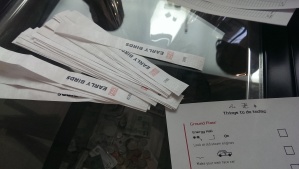
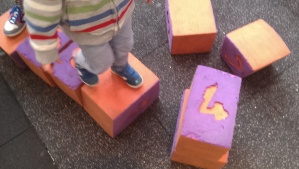

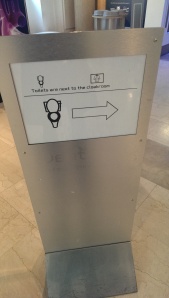
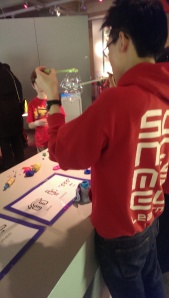

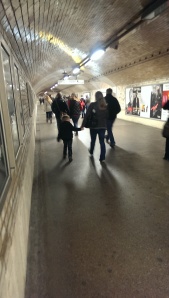

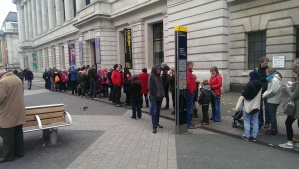








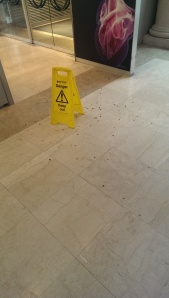
Comments 3
Great write-up! I’m a mum of 2 home educated boys in Bromley and we share your passion for museums. We visit popular and obscure museums at least 3 times a month and though the early bird session is not one we’ve experienced, we think it’s a brilliant initiative for kids on the spectrum. The only snag, I guess, is the timing for those not resident in London but that can’t be helped.
Hi there – lovely to see this follow-up post. It seems that going alone gave you the space to think through some issues for the benefit of those of us still to visit – thank you for that 🙂 There are lots of interesting reflections in your mail which I’m sure will be helpful to me when I visit. I’m aiming to take Dylan to the March early bird which is scheduled, as part of a birthday trip to London. Your earlier post put me on to this originally and this follow-up has definitely encouraged me further. Thank you – have shared! Liz
Author
Thanks Liz. I think we will also be going in March. Be good to say hello. I hope you get there and have a good time.